Posted by Elena del Valle on February 24, 2012

Why Has America Stopped Inventing book cover
Photo: Planned Television Arts
Contrary to what many of us think it seems the United States is not the most innovative nation on the planet any more. Darin Gibby, a Colorado patent attorney, has dedicated two decades of his life to representing clients filing patent registrations and claims. Over time his frustrations bubbled over and he realized it had become increasingly difficult and expensive to file a new patent registration, especially for individuals and small business owners. He researched the history of patents in the United States to discover how it was that our nation was rich in patents 150 years earlier and poor in patents today relative to the overall population. In Why Has America Stopped Inventing (Morgan James Publishing, $19.95), a 241-page softcover book published this year, he shares his findings.
An ineffectual patent registration system has made it nearly impossible for a lone inventor to register a new patent, according to Gibby. At its low point the United States patent overseers were only approving 12 percent of applications. Due to a series of actions by the government over the past century which continues to the present day patents have become the domain of large corporations with the resources to register and protect them yet little time for new inventions.
The book is divided into an Introduction and 22 chapters. In the last two chapters, the author addresses the high costs of registering an invention which start at $25,000 and can escalate steeply from there, and ways to fix the broken patent system.
“When I discovered that America invents half of what it used to, I wanted to know the reason. So, I began studying the lives of America’s famous early inventors for clues. In the process, I discovered that inventing in nineteenth century America was much more central to America’s culture than today,” said Gibby in response to a question about the most interesting part of the book project. “From Abraham Lincoln selecting the country’s three leading patent attorneys to be on his cabinet (Seward, Chase, and Stanton) to Daniel Webster arguing Goodyear’s case before the Supreme Court while still Secretary of State, all of America prized innovation. Patent cases were front page news, with transcripts of the Colt revolver cases being published daily in the N.Y. Times. Most important, I found that what made America successful more than a century ago could be brought back today. Why Has America Stopped Inventing? tells that story.”
Gibby spent two years researching and writing the book which includes much historical data and case studies. Over his legal career Gibby has procured patent registrations for hundreds of inventions and built IP portfolios for Fortune 500 companies.

Click to buy Why Has America Stopped Inventing
Comments:
Filed Under: Books
Posted by Elena del Valle on February 17, 2012

Who We Are: Hispanics book cover
Marketers and planners across the nation continue to examine the findings of the 2010 United States Census. One of the notable findings, from a big picture ethnicity and race perspective, is that there were three million more people of minority background and one percentage point higher than the experts anticipated.
The Second Edition of Who We Are: Hispanics (New Strategist, $89.95), published last year, outlines the main findings of the 2010 Census about the Hispanic population of the United States, including counts by state and major urban areas.
The book, provides black and white tables and illustrations and data on spending, household wealth, impact of the Great Recession, time use and attitudes about some issues. Who We Are: Hispanics is part of the Who We Are Series of three books sold together and individually. The other two titles are Who We Are: Asians and Who We Are: Blacks.
The 312-page book is divided into an Introduction, an Executive Summary and 11 chapters titled: Attitudes, Education, Health, Housing, Income, Labor Force, Living Arrangements, Population, Spending, Time Use and Wealth.
For the Who We Are Series the publisher’s staff dedicated, according to promotional materials, hundreds of hours reviewing, compiling and analyzing information and data from the federal government about the size and characteristics of the Asian, black, and Hispanic populations, described as “the most rapidly growing segments of the consumer marketplace.”
New to the second edition of the Who We Are Series is a chapter on the attitudes of Asians, blacks, and Hispanics on issues such as political identification, happiness and trust in others, religious beliefs, and support for gay marriage.

Click to buy Who We Are: Hispanics
Comments:
Filed Under: Books
Posted by Elena del Valle on February 10, 2012
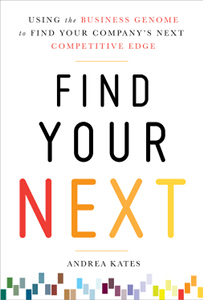
Find Your Next book cover
Photos: Andrea Kates
Andrea Kates, a branding specialist, believes many businesses share a similar “genetic” structure. She is convinced that by understanding what works for a company’s “genetic” type it is possible to fine tune that company focusing on strengths and avoiding weaknesses. In Find Your Next: Using the Business Genome to Find Your Company’s Next Competitive Edge (McGraw Hill, $30), a 226-page hardcover book published this year, she outlines the method and steps she proposes to unlock a company’s basic structure in order to focus on the fine tuning.
She believes there are six main parts to a business: product and service innovation; customer impact; talent, leadership, and culture; process design; trendability and secret sauce. Part of the research she conducted for the book consisted of in-depth interviews with representatives of P.F. Chang’s, GE ecomagination, GM/OnStar, IndieGoGo, Placecast, Autodesk, Cisco Systems, and Jones Lang LaSalle.

Andrea Kates, author, Find Your Next
Kates fours steps are meant to combine experience and instinct. They are: sort through options and evaluate hunches; compare your business structure (she calls it genome) with existing successful businesses in your field; adopt the ideas of others you think will enhance your company; and release habits that are no longer useful and adopt those that can help your business grow.
Kates, according to her book bio, has worked as a business strategist, facilitator, and speaker, with 250 business innovation initiatives for corporations, entrepreneurs, and organizations including Royal Dutch Shell (Asia-Pacific), Audi, Allstate, Continental Airlines, Hewlett-Packard, JP Morgan Chase, KPMG, the Houston Texans (NFL), and OnStar.
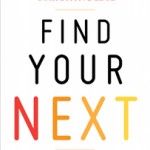
Click to buy Find Your Next
Comments:
Filed Under: Books
Posted by Elena del Valle on February 3, 2012
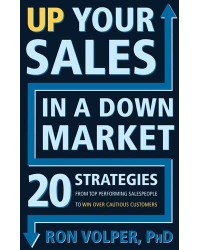
Up Your Sales in a Down Market book cover
Photos: Career Press
As consumer worries continue following the Great Recession and purchases decline the role of sales staff gains importance. Ron Volper, Ph.D., a consultant who has advised 300 companies including 87 Fortune 500 Companies on ways to increase sales, shares his thoughts on how to survive and thrive in the New Economy in Up Your Sales in a Down Market: 20 Strategies From Top Performing Salespeople to Win Over Cautious Customers (Career Press, $15.99), a 224-page softcover book published this year.
Based on 30 years of sales experience and his firm’s proprietary research on the topic Volper is convinced that people in sales need to update their strategies to adjust to customers attitudes and behaviors toward buying. He felt so strongly that he dedicated one year and nine months to publishing the book, his first.
The change in attitudes has had tangible effects on the purchasing process in today’s budget conscious companies, he says in the Introduction. For example, where a single person may have made purchasing decisions in the past a committee may be deciding now; and where a customer may have relied on sales assurances of quality in the past they may require proof today.
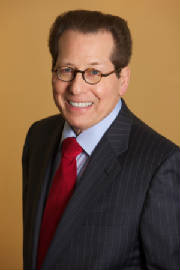
Ron Volper, Ph.D., author, Up Your Sales in a Down Market
In the book, he outlines 20 strategies to increase sales and discusses practical skills designed to help sales staff win over cautious customers, orient buyers to overcome fears and objections, prepare presentations to convince hard-to-win-over customers and train sales teams to rely on the winning habits of top-performing salespeople.
“Ask more questions to find out your customers’ needs and expectations,” he said by email in reply to a question asking his advice to novices, nonprofits and small businesses. “Talk less and later in the sales conversation and listen closely to what the customer says and does not say. Once you make a sale do everything you can to stay in touch with your customers and exceed their expectations; for a current customer is 25 times more likely to buy another product (or in the case of a non-profit contribute to your cause) than a new customer is likely to buy anything. And the best way to develop new customer relationships is by getting referrals and introductions from existing customers.”
Volper is managing partner of the Ron Volper Group and an adjunct faculty member at New York University. Before founding his company he was vice president of Sales and Marketing for McGraw-Hill and headed Sales Consulting and Training for Xerox Learning Systems.

Click to buy Up Your Sales in a Down Market
Comments:
Filed Under: Books
Posted by Elena del Valle on January 27, 2012
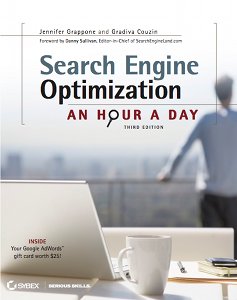
Search Engine Optimization book cover
Photos: Jennifer Grappone, Gradiva Couzin
Jennifer Grappone and Gradiva Couzin make their living as partners of a California search engine optimization and social media consulting company. They dedicated six months to writing a book about what they do for clients. Two updates followed, each one requiring about six months to achieve. In the third and most recent edition of Search Engine Optimization An Hour A Day (Wiley, $29.99), published in 2011, they outline their thoughts on the subject starting with a basic explanation in the first chapter and making their way slowly to the final tenth chapter where they suggest supplemental ideas in Extra Credit and Guilt-Free Slacking. Every section was updated and the authors added more information on social media, online reviews, and local search optimization.
“The tactics laid out in the book can apply to any site, and we have customization tips dedicated to many types of companies, from one-person shops to large B2C or retail sites. We hear from readers in a wide range of industries and organizations large and small, however we think our book is probably most popular with small business owners,” said Couzin by email in response to a question about their target audience. “The book definitely has some readers in the over-50 crowd who might be turned off by more technical books, and we also hear from readers in their 20s who are just getting started in online marketing. We’ve also learned that the book is being used as a textbook for college-level marketing courses, which is exciting!”
Along the way they address large, small and really small companies and their needs in the 408-page softcover book divided into three parts. In Chapter 4, for example, they discuss current search engine procedures and emphasize the importance of building a visitor centered website without obsessing about search engines. Success with search engines and clients remains part science and part art, according to them.

Gradiva Couzin, co-author, Search Engine Optimization
“There is no such thing as ‘set it and forget it’ with SEO and social media.You have to keep updating your site, generating excellent content, building relationships, and trying new strategies to keep ahead of your competitors. This is particularly true with regard to social media, you have to be open to new strategies and constant testing,” said Couzin.

Jennifer Grappone, co-author, Search Engine Optimization
In the book, the authors point out what they consider the most important factors that may lead to high search engine placement: incoming links and link text, the standing of the site, the title of the page in HTML code, HTML text visible on a page, how old a domain is, being the first publisher of the content and having fresh content or updates and the loading speed of the site.
They also discuss search ranking factors, paying for placement, and trend spotting. Other chapters address the importance of team work, a monthlong plan for three months, and options to lower the workload while maximizing results.
Before turning her efforts to search engines in 2000 Grappone was a web project manager and video producer. Couzin, a civil engineer and programmer, started working with search engine optimization a year before her colleague.

Click to buy Search Engine Optimization (SEO)
Comments:
Filed Under: Books
Posted by Elena del Valle on January 13, 2012

Violencia Doméstica book cover
Photos: Concordia Publishing House
In past years, nearly one in four adult women and one in nine men in the United States have reported experiencing intimate partner violence (IPV) at some point in their lives; among Hispanics 20.5 percent of women and 15.5 percent of men suffer partner violence; and 85 percent of domestic violence victims are women and 25 percent of women who attempt to escape from batters are murdered, according to Intimate Partner Violence, Bureau of Justice Statistics Crime Data Brief 2003 and CDC Behavioral Risk Factor Surveillance System Survey 2005.
Between 1995 and 2008, while Celso William Chignoli was senior pastor of Scruggs Memorial United Methodist Church and senior pastor of the United Methodist Church of the New Community he established La Clinica, a health program that provided medical, dental, psychological, and social work services free of charge to 1,200 patients a month. Eighty-five percent of those were migrant or undocumented workers who could not afford to pay for their health care.
Among the patients there were people who exhibited complications associated with domestic violence, both victims and victimizers. This led him to research the topic and offer specialized courses for pastoral care and counseling in the summer class programs at Perkins School of Theology, Concordia Seminary and elsewhere.
He wrote about the subject initially for seminarians, pastors and church ministries. Then he directed his attention to victims in Spanish in Violencia doméstica: Detección, prevención, y ayuda (Editorial Concordia,$8.99), to help them gain insights to overcome this situation without serious problems. He also directed the 126-page softcover book to pastors and future pastors believing that if they understand domestic violence they can be prepared, prepare their congregation, and have the option to establish a restorative ministry.
The statistics are daunting: 75 percent of fatalities occur when a victim announces she or he will leave or end the relationship. Chignoli believes it is better to leave without an explanation, and learn to heal.

Celso William Chignoli, author, Violencia Doméstica
Domestic violence is taboo within Hispanic households and other groups, according to the author, because it is “rooted in anger and the lack of ability to manage that anger.” The presence of aggression, violence and sexual abuse in the media; the fact that in the majority of Latin American and Spain there are no protective laws and have not developed a sense of respect towards women, according to him, are other contributing factors. Discrimination, he says, is also common, although 17 percent of domestic violence victims are men. Often, according to him, Hispanic women cling to chauvinist customs and when a woman does not submit to her partner’s needs, it can escalate to death.
According to Chignoli a large percentage of Hispanics do not have access to a computer and do not have education or resources in Spanish; and Latino communities in the United States may feel “disconnected to reality because of the lack of solidarity and participation in education campaigns regarding mutual respect in relationships.” He believes by speaking out against domestic violence, creating awareness, and taking action people can fight domestic violence.
Chignoli studied medicine at the Universidad Nacional de Cordoba in Argentina and received his graduate degree in divinity from Eden Theological Seminary in Saint Louis, Missouri. Editorial Concordia, the Spanish division of Concordia Publishing House is a not-for-profit publishing company and the publisher of The Lutheran Church—Missouri Synod.

Click to buy Violencia Domestica
Comments:
Filed Under: Books
Posted by Elena del Valle on January 6, 2012
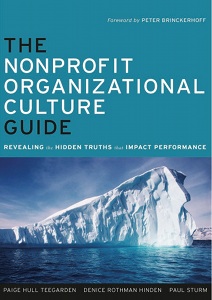
The Nonprofit Organizational Culture Guide book cover
Photos: Josey-Bass, Greg Shaler, Paige Hull Teegarden, Paul Sturm
What people say and what they do are often in conflict and so it is with the organizations where they work and that they run. Companies and organizations, like people, may unwittingly send mixed messages. One organization may tout its democratic and equitable approach toward its members while exhibiting a clearly discriminating pattern of employment toward its staff, for example.
The often unwritten organizational culture sets the tone within an organization and dictates informally the direction it takes and its parameters. Each company or organization has its own unique culture. There is, according to some experts, no single culture that is the best for everyone. On the other hand, it is important when dealing with any organization or company to be aware of and understand its culture. And, for profit and nonprofit entities are different by their very nature.

Paige Hull Teegarden, M.P.P.
There are about two million nonprofit organizations employing as many as eleven million people in the country. Although many assumptions can be made about the characteristics of a nonprofit entity often there are no clear definitions about its organizational culture. In The Nonprofit Organizational Culture Guide Revealing the Hidden Truths that Impact Performance (Josey-Bass, $40), Paige Hull Teegarden, M.P.P., Denice Rothman Hinden, Ph.D., A.C.C., and Paul Sturm, M.P.A., M.S. outline their thoughts on the topic for an audience of nonprofit leaders, managers, educators, funders and anyone seeking to understand the nonprofit sector and its effectiveness. The book required seven years of work and two publishers (the first one went out of business before publishing the book) before becoming available in December 2010.
The authors believe understanding the culture of an organization is an ongoing process that may assist those who work in or interact with the organization to be effective in orienting new staff and board members, identify leaders, define the organization’s change parameters, develop matching strategies, communicate and market with success, and find appropriate restructuring or merger choices.
“There were three big challenges. One was our inability to get financial support early on to support our research. Folks just weren’t convinced that we could reveal something that you can’t see. The second challenge was losing our publisher just before the book was going into production. The third challenge was keeping up the energy of all three authors to get the book out after seven years of trials,” said Rothman Hinden in response to a question about the biggest challenges they faced.
“Building upon the previous research and literature about organizational culture in a way that would be useful to nonprofit organizations. Prior to our book, virtually all the work and references about organizational culture had been focused on for-profit corporations,” said Sturm in response to the same question.

Denice Rothman Hinden, Ph.D., A.C.C.
The 174-page softcover book is divided into five chapters: Nonprofit Culture, Six Examples of Nonprofit Culture in Action, Revealing Organizational Culture, Reflections on Organizational Culture, and Recommendations for Nonprofit Leaders and Capacity Builders; and three appendices: Sector Informants, Organizational Culture Diagnostic Tools and About Mind Maps and Mind Mapping.
The authors propose four phases toward revealing the organizational culture process: Preparing by establishing a basic understanding of the organization and its context; identifying the organization’s objectives by finding culture stories and understanding their meaning; studying how the organization’s culture may affect the organization in achieving its objectives and developing a plan of action; and examining the ways in which change takes place within the organization in order to implement a plan.
“The encouragement and feedback we’ve received from thought-leaders and others committed to enhancing the effectiveness of nonprofit organizations and the nonprofit sector,” said Sturm when asked about the most rewarding aspect of collaborating in the book.
“Most rewarding has been demonstrating to organization leaders that there is great value in paying attention to what you can’t easily see in organizations. The book is a call to action to leaders to think about organizational experiences in a different way, and to use what they learn to create more effective management and program strategies. Helping nonprofit organization leaders think intentionally about the hidden elements of organizational culture is an important new step for strengthening organization performance,” said Rothman Hinden.

Paul Sturm, M.P.A., M.S.
Hull Teegarden, president, Think Outside, is a systems thinker with more than 15 years of experience. Rothman Hinden*, president, Managance Consulting & Coaching, has more than 25 years of nonprofit management experience. Sturm, a 25-year specialist in nonprofit leadership development and capacity building, teaches at the University of Baltimore and the College of Notre Dame of Maryland.
* The author of this note and Denice Rothman Hinden have been friends for many years.
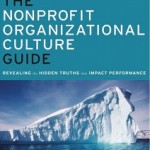
Click to buy The Nonprofit Organizational Culture Guide
Comments:
Filed Under: Books
Posted by Elena del Valle on December 9, 2011
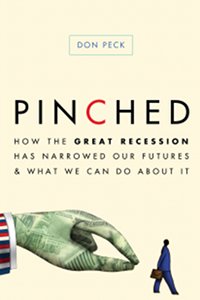
Pinched book cover
Photos:
During the Great Recession of 2009 the economy shrank 4 percent, more than 8 million Americans became unemployed, home values dropped about 30 percent on average, the Dow was roughed up and 165 banks failed just to name some highlights.
Don Peck, features editor at The Atlantic, believes this most recent recession and the technological changes that preceded it will have a lasting impact on our country, specifically on the way we live, our work, and our family ties. Although some businesses and individuals are adapting overall Americans have been unable to adapt; this inflexibility has led to economic weakness and a social divide, according to the writer.
In Pinched How the Great Recession has narrowed our futures and what we can do about it (Crown Publishers, $22), a 223-page hardcover book published this year, he explains his theories and proposes solutions. He is optimistic in the country’s ability to overcome this historically difficult period thanks to its capacity for adaptability and reinvention, he says in the Introduction.

Don Peck, author, Pinched
The writer, a resident of Washington, D.C. who covers the economy and American society, is of the opinion that there is a divide between rich non rich Americans that affects the views and impact of the wealthiest in society; that power urban areas are overcoming the worst of the recession while suburbs and other areas favored by the middle class are falling behind; that because many working class men have lost their jobs women are the new economic leaders of the household; and that the earning power of Millenials is decreasing, affecting that generation’s views and confidence.
“Amid the strains and fissiparous forces of a new, global era, can we still find ways to mix and balance liberty with justice, self-interest with cooperation?” he asks in the final chapter; and closes with the idea that to remain a united country Americans must find a way to do just that.

Click to buy Pinched
Comments:
Filed Under: Books
Posted by Elena del Valle on December 2, 2011

Buying and Owning a Mac book cover
Photos: Jonathan Zschau
A couple of years ago Jonathan Zschau, a Mac lover and Boston-based attorney, had problems with his Mac. After going back and forth with Apple and preparing thoroughly to protect his rights as a consumer, he discovered the technology company was willing to replace his Mac with a new model since his original model was no longer available.
Over time he wrote down his thoughts for interacting successfully with Apple and eventually there were so many pages he decided to gather them into Buying and Owning a Mac: Secrets Apple Doesn’t Want You To Know (Jonathan Zschau and Cultomedia, $9.99) a 77-page softcover book published this year.
“For me, personally, the biggest challenge was writing a book that wouldn’t become obsolete in a week. The topic of Apple Inc. and Macs in general really lends itself to the blogosphere. Cult of Mac (cultofmac.com), obviously, is a great Apple-centric news site, which often posts hundreds of articles a week. Apple news changes fast and writing something that the average reader would find helpful both today as well as six months from now was a challenge,” the author said by email when asked about the biggest challenge he faced when writing the book.
“It’s easy to post a blog article about a particular defect in a certain line of Macs, but that’s not going to be very helpful to a reader with a defective iPad 3 a year from now. Therefore, I had to put a lot of time explaining my thought process instead of giving dated examples. My book focuses on identifying the proverbial forks in the road — where the reader should consider performing his or her own research over the Internet (i.e. Google searches, etc.) — rather than detailing a list of answers to particular questions about particular Macs. After all, all of that’s already available on the Internet.”

Jonathan Zschau, author, Buying and Owning a Mac: Secrets Apple Doesn’t Want You To Know
In the book, he discusses what he believes are the most common issues a Mac owner may face such as tips on when and where to buy a Mac, hardware issues, identifying defects, dealing with customer service, choosing the right Mac, understanding your rights as a consumer, taking advantage of Apple policies, as well as recycling, donating or getting rid of your unit safely. He suggests bargain hunters consider refurbished or clearance items.
“I have assisted friends and family in the selection of refurbished Macs and I do own a refurbished iPod and iPhone. I do recommend considering refurbished Macs when price is significant consideration. All refurbished Macs go through extensive quality control processes and are functionally new machines,” Zschau said via email when asked if he has personally purchased refurbished Macs.
“Apple does offer great deals on refurbished products and these products all come with precisely the same warranty coverage and AppleCare eligibility as new products and, therefore, if something were to break your Mac will be covered in precisely the same way as a new Mac. The only downside is that refurbished Macs are usually not the latest and greatest, they might be last year’s model. If you’re considering a refurbished Mac, you should take some time to research how the refurbished model compares to other versions currently on sale or expected to go on sale soon.”
Since becoming an attorney in 2008, Zschau has practiced litigation, eDiscovery and litigation support, business transactions, corporate governance, and consumer protection law.

Click to buy Buying and Owning a Mac
Comments:
Filed Under: Books
Posted by Elena del Valle on November 18, 2011
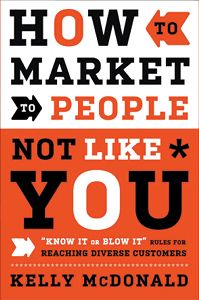
How to Market to People Not Like You book cover
Photos: Wiley
Many marketers believe that for effective marketing it is important, if not essential, to have a clear idea of who the target audience is. The thinking is that knowing who you are addressing as well as his or her likes and dislikes allows you to craft a message that resonates with the end user, listener, reader or buyer and make the message available in a channel convenient to him or her.
Kelly McDonald, an ad executive who counts among her skills multicultural marketing, takes the idea a step further. She proposes Narrowcasting, a way to reach out to a highly targeted group in an optimum fashion. In her opinion it’s better to reach a sliver of the market that has an interest in your product or service effectively than to reach a broad spectrum of the population with no interest in what you represent. She explains her ideas and how to implement them in How to Market to People Not Like You “Know It or Blow It” Rules for Reaching Diverse Customers (Wiley, $24.95), a 209-page hardcover book published March of this year.
Her book is divided into three distinct sections: Seven Steps for Selling to New and Unfamiliar Customers, Key Customers Who Could Drive Your Business Growth, and Other Important Market Segments. She starts out addressing the concept that there are likely desirable customers the reader has not thought of and ways to capture them as customers.
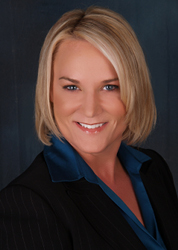
Kelly Mcdonald, author, How to Market to People Not Like You
In the second section, she discusses specific groups such as different generations, women, immigrants, Hispanics, African-Americans, and Asians and Asian-Americans. In the final section, she explores groups by political views, sexuality, hobbies and special interests, urban versus rural residents, military versus civilian markets and vegetarian versus meat eaters.
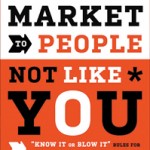
Click to buy How to Market to People Not Like You
Comments:
Filed Under: Books








































